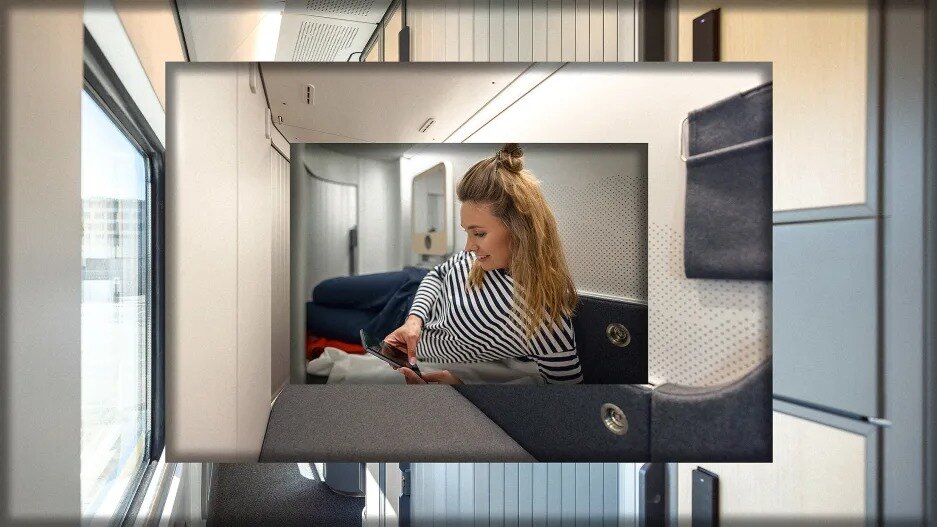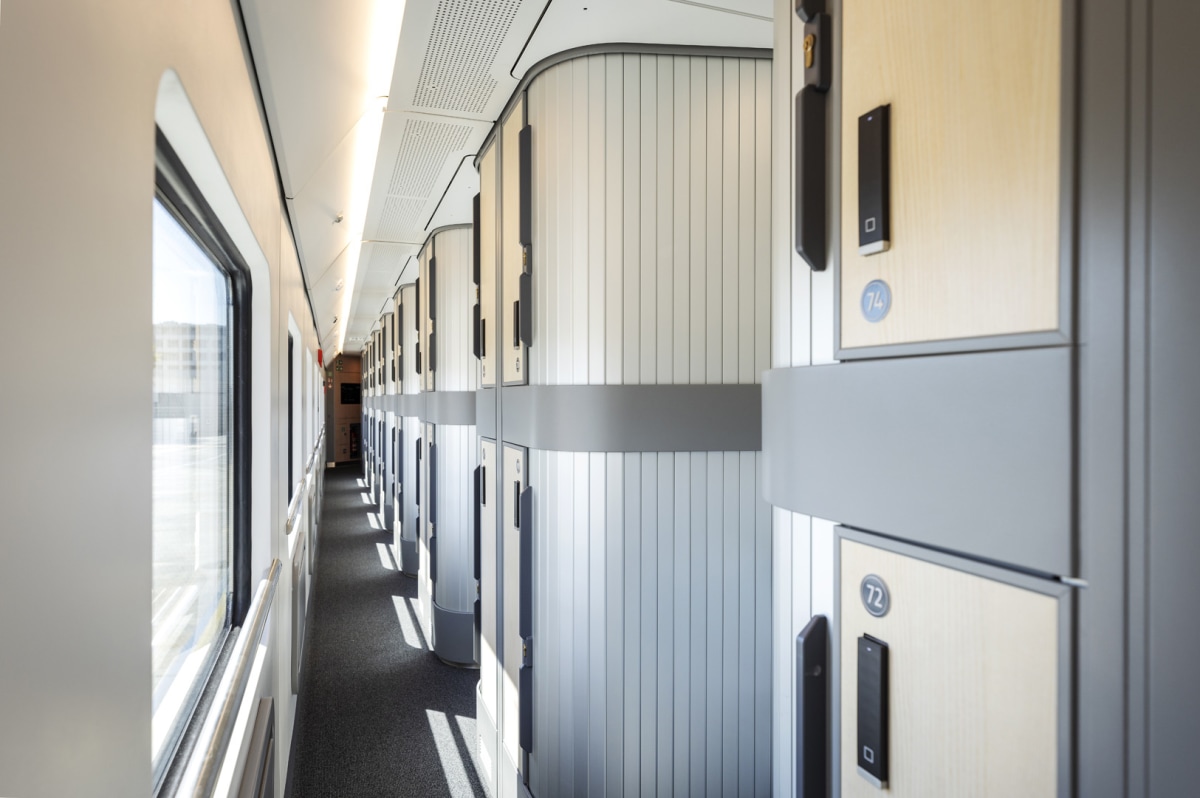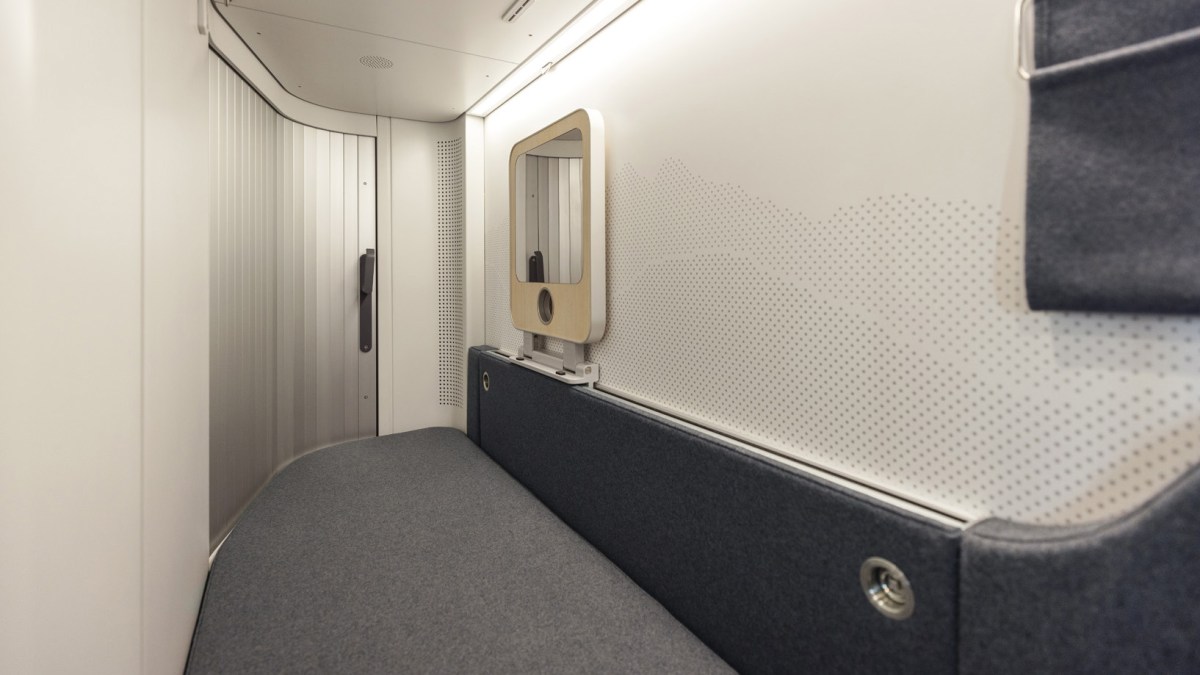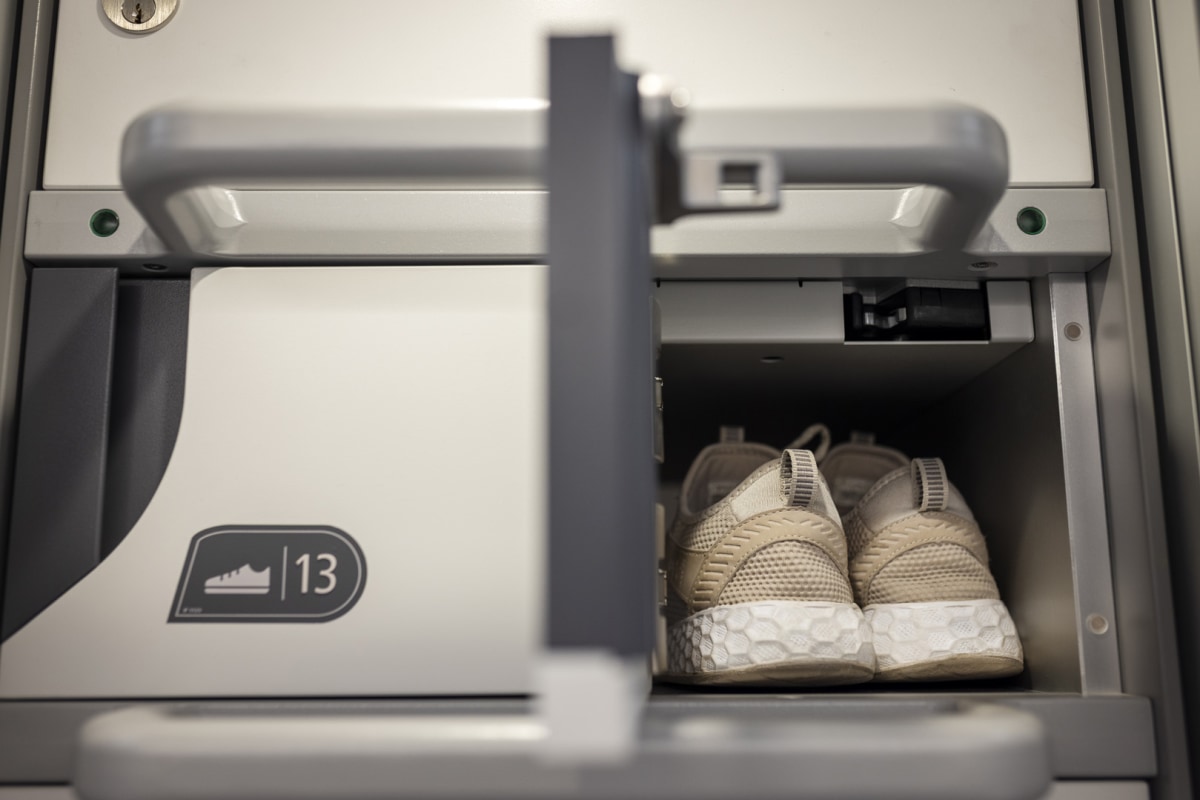- | 8:00 am
This new coffin-size train cabin could be the future of overnight rail travel
Austria’s national railway company is betting that riders will embrace the cozy quarters.

It’s the crossover innovation nobody quite expected. Like the offspring of a steam age sleeper car and a Japanese capsule hotel, new trains beginning service later this month in Europe contain what may be the most interesting new interior design railroads have seen in years. Meet the Mini Cabin.
The Mini Cabin is, as its name suggests, a tiny compartment built for a solo traveler to sleep on an overnight train trip. (Couples can request adjacent Mini Cabins, connected by a small sliding door.) It’s one of several new features being offered on night train routes operated by ÖBB, Austria’s national railway service. The Mini Cabin—part coffin-esque, part first-class airline seat—is a horizontal slot of a train seat intended to be used primarily for lying down. Inside, the cabin is basically a sleeping pad, with a fold-down table, a reading light, and a small viewing window. Measuring 6-feet-2-inches long, with enough vertical space for even a tall person to sit upright, the Mini Cabin is a private sleeping room fit for one.

Trains equipped with Mini Cabins will run the 12-and-a-half-hour route between Vienna and Hamburg starting December 10. They are part of ÖBB’s Nightjet train service, which operates several overnight routes. The Mini Cabins are the newest feature of these overnight trains, which also include updated four-to-six-person couchette compartments.

As it was preparing to buy these new trains for some of its most successful routes, ÖBB conducted customer surveys and analyses to better understand what people want when traveling overnight by train. “It turned out that privacy was becoming increasingly important for customers when traveling,” says Bernhard Rieder, an ÖBB spokesperson.

This information was used to help guide the development of the Mini Cabin concept. A mock-up of the compartment was built, and then tested for usability and comfort. “People were able to try out the mock-up and make their wishes known. These were then taken into account during the realization of the project,” Rieder says.
Inside, the Mini Cabins are hyper-efficient privacy chambers, with dining space, a storage pouch, and lighting and ventilation controls all within ergonomically realistic reach. “The interior design in the Mini Cabin is particularly challenging, as all the important elements have to be taken into account, right down to a folding table for breakfast,” says Rieder.

For couples traveling together, there’s a sliding screen at the head of the cabin that can open to a neighboring compartment, like a tiny portal offering sideways face time (or a sort of unsexy pillow talk). Similar to a connecting door in adjacent hotel rooms, the portal can be locked on both sides.

The Mini Cabins are oriented in groups of four, with one stacked on another and separated from the other two by a locking storage area for bags and shoes near the cabins’ articulated sliding doors. Small steps and handles in between the vertical storage area provide access to the upper cabins. Creating these private options for mostly individual passengers required no spatial sacrifices. “Four Mini Cabins require exactly the same space as a couchette compartment for four people,” Rieder says.
The benefit of the Mini Cabin is that it opens the privacy potential for sleeping on overnight trains to solo travelers. The base fare for a midweek round trip in a Mini Cabin between Vienna and Hamburg would cost about $340. Travel alternatives that are either faster, cheaper, or roomier certainly exist, but are not likely to include all of the above. The Mini Cabin, for those not deterred by the compact space, is a unique option, and one that could change the way many people travel.





































